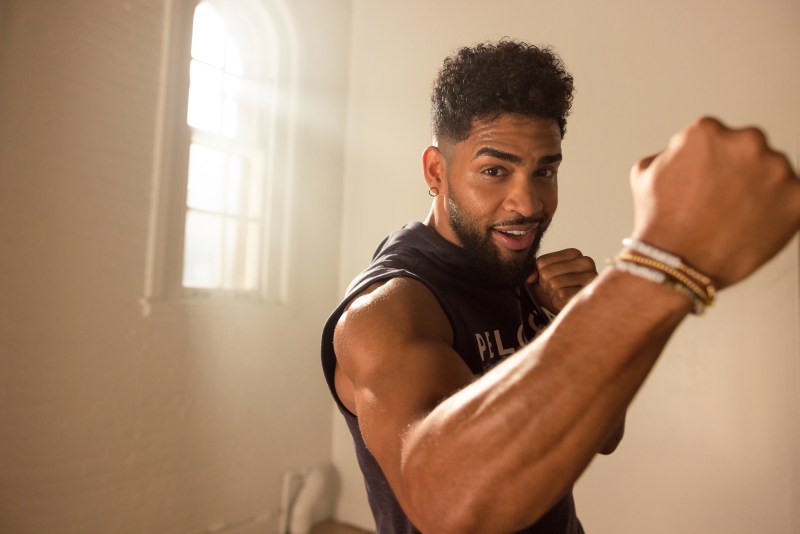
To Peloton instructor Rad Lopez, boxing was always a celebration. The 30-year-old New Yorker remembers big family gatherings for the fights when he was a child in family gatherings among aunts and uncles, with food and drinks. But unlike the rest of his relatives, he was captivated with the fights themselves. “It’s a true test of composure. It’s grit and grace,” Lopez tells The Manual. “I’d be the only one watching the full card, from the first fight to the last.” When Peloton hired him in June officially as a strength trainer, there was also an unannounced project he’d be joining: With fellow instructors Kendall Toole and Selena Samuela, Lopez would develop Peloton’s first boxing module, and on Tuesday, December 7, that module went live.
“I feel like boxing is the culmination of so many of our disciplines,” Lopez says of the sport’s place in the Peloton pantheon of fitness. All those hills and leaderboards you’ve topped on the bike? They translate to transferring power from the ground into your punches. The fluidity you’ve found from yoga? It’s grace in movement as you bob and weave. And that stamina from the treadmill and the muscle from strength training? It’s brute force through your knuckles and the endurance to deliver it round after round. “You’re using all the modalities to be really good at boxing,” he says.
Peloton’s boxing module is designed as a two-week course comprised of eight 20-minute classes. It requires zero gear (it’s entirely shadowboxing, hitting the air rather than a heavy bag), and it’s appropriate for those with experience and those without. Each session is sequential, building on the last, literally from the ground up, from footwork to punches, combos, and beyond. “We teach the basics and foundation of what boxing is from the first step to the very last step,” he says.

Lopez is still a passionate fan of the sport, and while he gave up competing in amateur bouts, he can still rattle off a host of names and their virtues, from the jab of Oscar De La Hoya to the defense of Floyd Mayweather and the pure guts of Felix Trinidad. But he’s as equally ready to espouse the sport’s unseen virtues that can be practiced even without setting foot in a ring. “Boxing is the physical expression of fighting through things,” he says, whether that might mean a tough week at work or a conflict with a supervisor. “The beauty of it,” he adds, “is that you can make it what you want it to be.”
Even if you’ve never thrown a punch (or, for that matter, ridden a stationary bike or run a mile on a treadmill), the progressive Peloton program can get you reaping the benefits of a boxer’s regimen without getting punched in the face. Aside from how fun it is, Lopez says, the benefits of boxing classes are a stronger body and mind, as well as a low impact form of active recovery. You’re also starting a pursuit that will never quite be perfected.
“Boxing is an ever-growing sport, and you can always get better,” he says. And that includes himself: “I can still sharpen up my jab.”
Editors' Recommendations
- The best Peloton instructors to match your workout vibe
- 7 simple fitness tips: The workout plan you need if it’s been a while
- FightCamp Review: At-Home Cardio Boxing to Get You Shredded
- A Beginner’s Guide to Indoor Cycling Workouts
- 10 Benefits of Jumping Rope for Burning Calories




